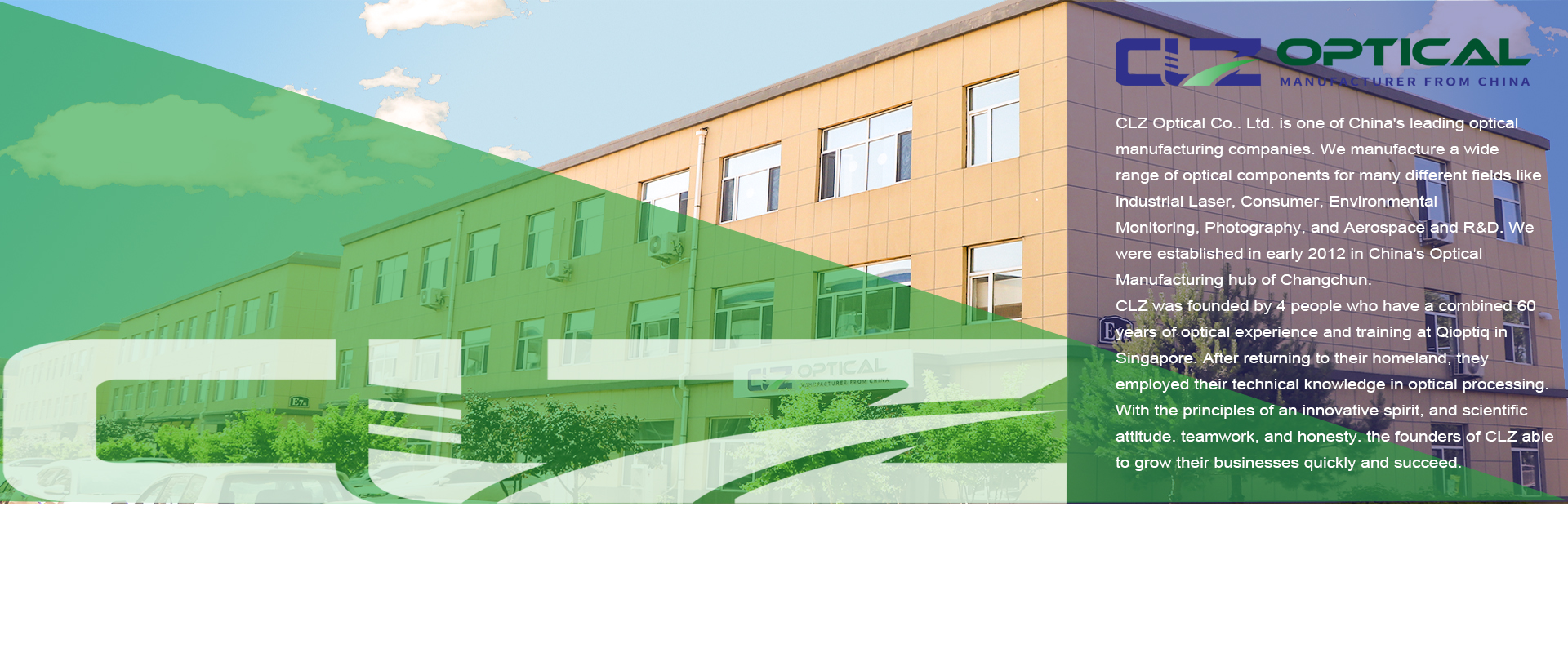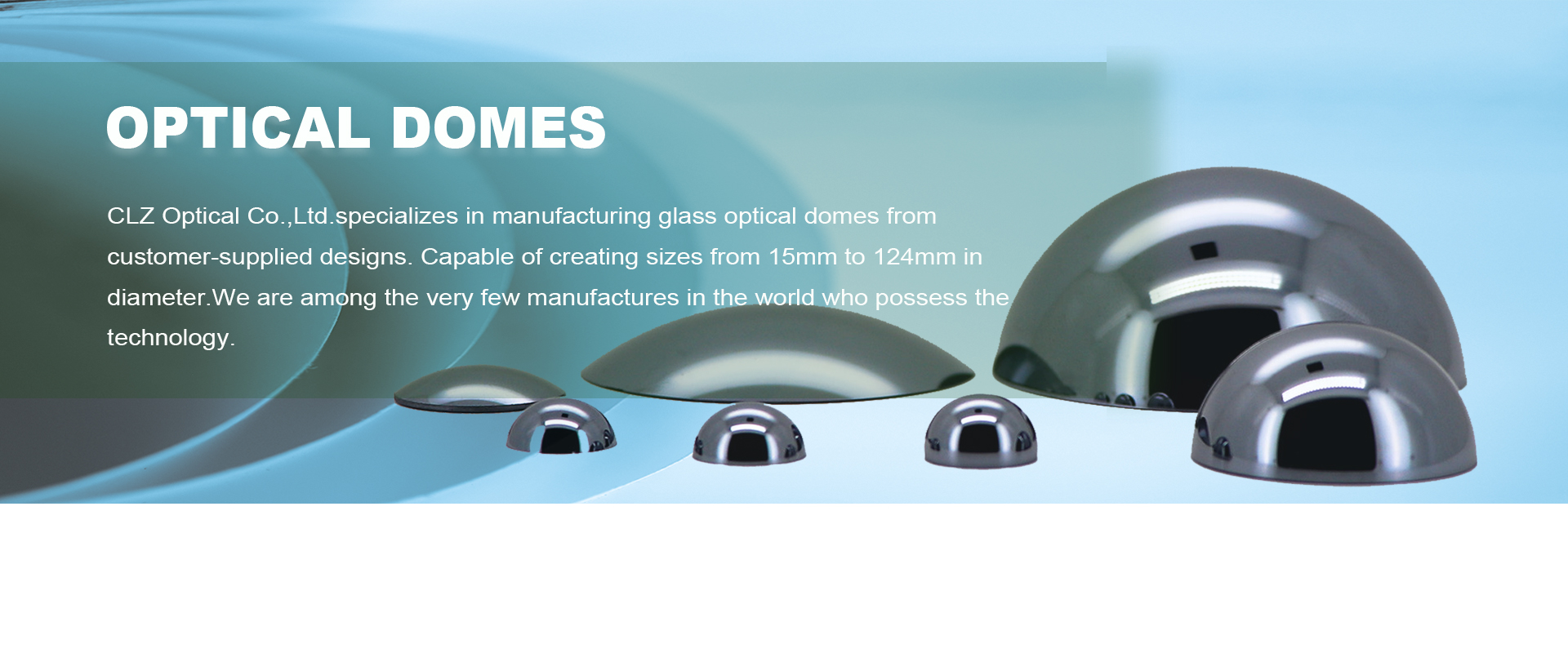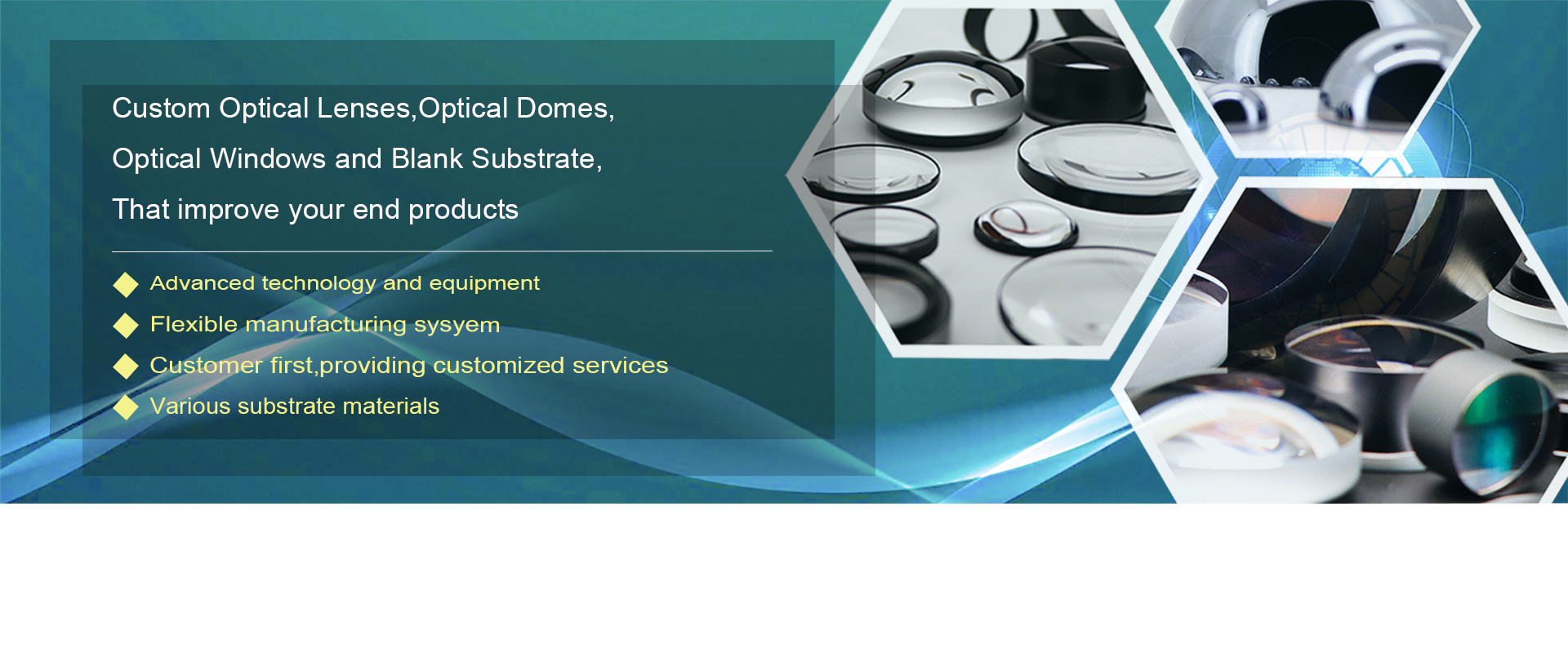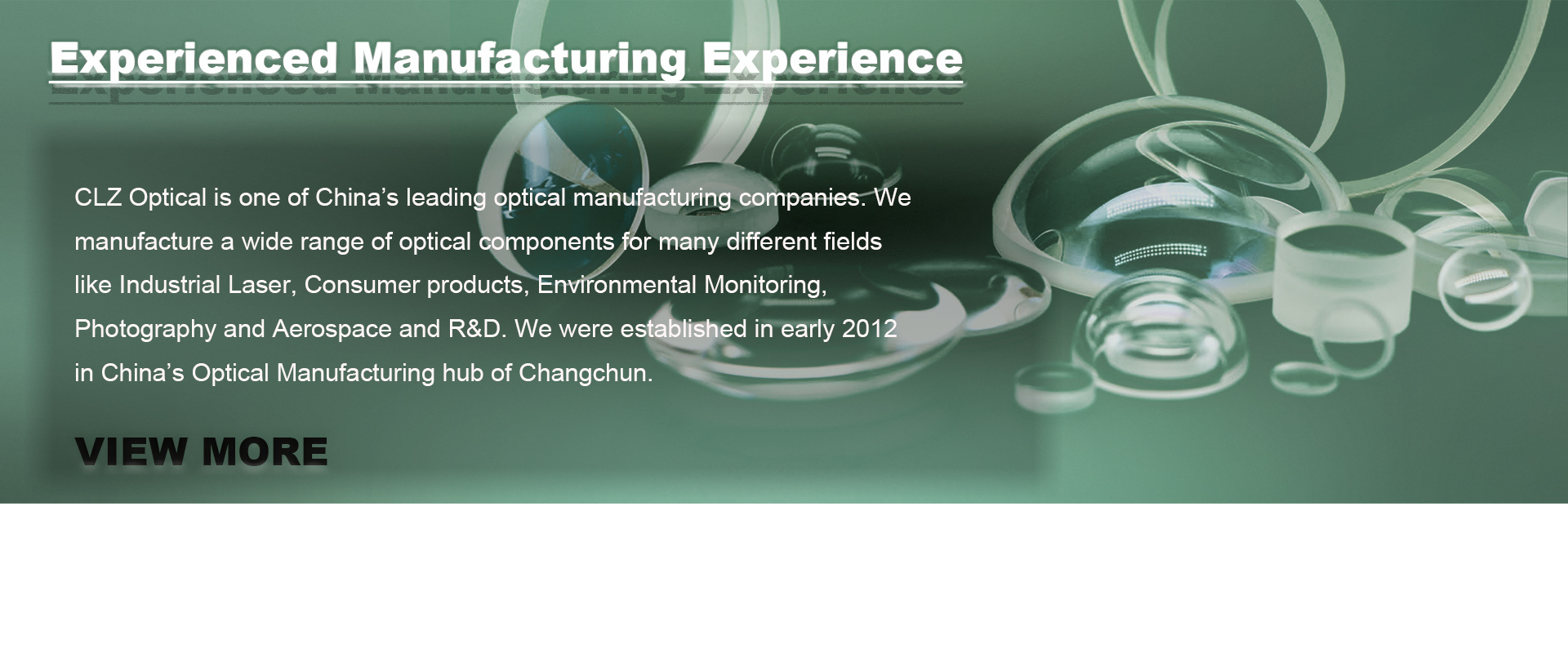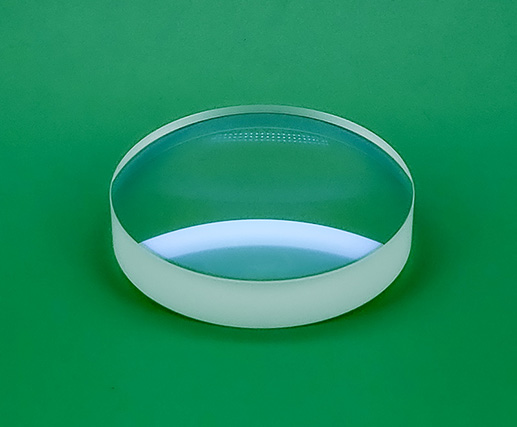Spherical Lenses
◢Introduction of Spherical Lenses
Spherical lenses are lenses with at least one curving surface. They converge or diverge light, change the path of light and affect the wavefront curvature of light. They are widely used in medical imaging, laser optics, security monitoring, automotive industry, military industry, aerospace and other high-tech fields. CLZ Optical Co.,Ltd. can provide you with customized plano convex lenses, plano concave lenses, bi-convex lenses, bi-concave lenses, meniscus lenses and achromatic lenses according to your requirements. Meanwhile, we can also coating spherical lenses according to your needs.
FAQ: What is the Difference Between Spherical Lens and Aspheric Lens?
◢What are the kinds of spherical lenses? How to use spherical lenses?
1. Plano Convex Lenses
Plano convex lenses is a lens that is flat on the one side and convex on the other. Plano convex lenses converge parallel light, correct the deflected light and convert point light sources into parallel light. When light enters from the convex surface of the plano convex lens, the light will converge to a point on the convex surface. When a point light source enters from the plane of the plano convex lens, the light will be turned into a parallel beam. The focal length of a plano convex lens can vary depending on wavelength. Plano convex lenses can be used in transmitters, detectors and lasers.
2. Plano Concave Lenses
Plano concave lenses is a lens that is flat on the one side and concave on the other side. The plano concave lens deviates from the parallel incident light and fors a visible virtual image. The collimated beams through the plano concave lenses become divergent beams. In the optical system, plano concave lenses are possible to enlarge the light beam, increase the focal length, project light, and cancel the aberrations of additional lenses in the optical system. Plano concave lenses can be used in laser beam expanders, telescopes, collimators, optical transceivers, magnifiers and radiometers.
3. Bi-Convex Lenses
Bi-Convex lenses is a lens that is convex on both sides, with similar curvature radii on both sides. Bi-Convex lenses are symmetrical, which can minimize spherical aberration, coma, distortion, and aberration. The larger the conjugate ratio, the larger the aberration generated. One side of the Bi-Convex lens is used to correct deviated light. The other side focuses parallel light into small spots. Bi-Convex lenses converge, transmit lights and can transfer images to other optical systems. Commonly used in imaging relay systems and imaging of objects with limited conjugate distances.
4. Bi-Concave Lenses
A biconcave lens is a lens with a concave surface on both sides, with the same curvature radius on both sides. Bi-concave lenses disperse collimated light and converge the input light. In the optical system, they can be used to expand the beams, project the light and increase the focal length of the optical system to minimize spherical aberration, coma and distortion under unit conjugate ratio. They are used in laser beam expanders, optical character readers, viewers and projection systems.
5. Meniscus Lenses
The two surfaces of meniscus lenses are in the same direction. Meniscus lenses correct aberrations, eliminate chromatic aberrations and change spherical aberrations. They often combined with other lenses to form an optical system, changing the focal length of extra lenses. Widely used in corrective lenses, condensers for lighting systems, CO2 lasers and infrared optical systems. If the outer arc of the meniscus lens is greater than the inner arc, it can be used as a magnifying glass.
6. Achromatic Lenses
Achromatic lenses are generally made by cementing lenses of two different materials. These two materials are usually flint glass and crown glass. The focal lengths of the two single lenses are same, but the refractive index and dispersion are different. The low-dispersion crown glass is a positive lens and the flint glass is a negative lenses. The dispersion of the two glasses counteract each other to eliminate chromatic aberration. The two lenses are usually combined with optical special glue. There are also cemented lenses that do not use special optical glue, which relies on external fixation to combine two single lenses together.
Compared with single lens, achromatic lens reduce spherical aberration and chromatic aberration. When an achromatic lenses is in infinite conjugation state, its spherical aberration is the smallest. Structurally, using an achromatic lens can simplify the structure of the optical system; in imaging, using an achromatic lens can reduce stray light, decrease light loss and provide better imaging quality.
Which kinds of material of spherical lenses we can provide for you?
CLZ Optical Co.,Ltd. produces spherical lenses made of optical materials such as optical glass(K9、N-BK7、N-SF11), fused silica, fluoride and silicon.
If you need spherical lenses made of other optical material, please contact us.
FAQ: Do you know about Silicon Spherical Lenses?
Which size of spherical lenses we can produce?
| Spherical Lens Manufacturing Specifications | |||
| Commercial Quality | Precision Quality | High Precision Quality | |
| Diameter | 6 – 280mm | 10 – 200mm | 12-100mm |
| Diameter Tolerance | +0/-0.2mm | +0/-0.05mm | +0/-0.02mm |
| Thickness | ±0.1mm | ±0.05mm | ±0.02mm |
| Radius Tolerance | ±0.3% or 2.5λ | ±0.1% or 1.5λ | Fix to Test Plate within 1λ |
| Irregularity (PV) | 1.0λ | λ/4 | λ/10 |
| Wedge Lens (mm) | 0.1 | 0.01 | 0.002 |
| Surface Quality | 80-50 | 40-20 | 10-20 |
Which kind of Metrology Equipment do we have?
1. Zygo® Verifire Interferometer - 4",
2. Perkin Elmer Lambda 900 UV/VIS/NIR Spectrometer
3. Opticentric Centering Machines
4. Edmund Optics Scratch-Dig Sets
5. Spherometers , Calipers, Dial IndicatorsDial indicators accurately measure small distances and angles and are used for dimensional measurements of optics.
Why is CLZ your best choice?
Since its establishment, CLZ Optical Co.,Ltd. has been optimizing every process of producing optical components with the aim of cost-effective and innovative technology, we are a professional spherical lenses manufacturer. Our team has rich production experience. The four founders have worked and studied at the famous Singapore optics company Qioptiq. Over the years, our company has provided many batches of custom spherical lenses,optical domes, optical windows, optical mirrors, optical prisms and other optical components for domestic and foreign customers. According to their requirements, we use various optical materials required to produce coated or uncoated optical components to achieve the application effects that customers expect. We have been trusted by customers and established long-term business relationships. We always value the quality of each batch of optical components, and more value the cooperation relationship with customers. We are convinced that quality creates value!










